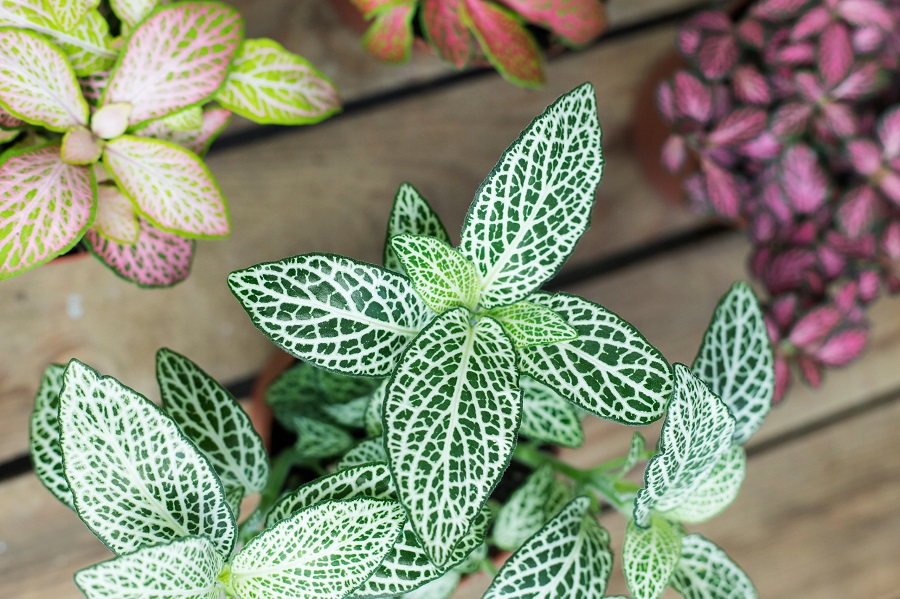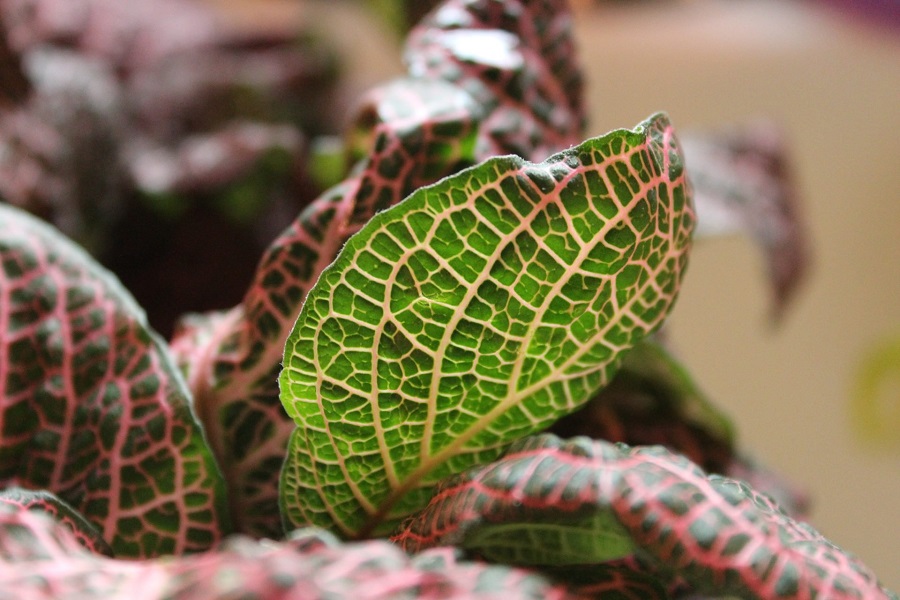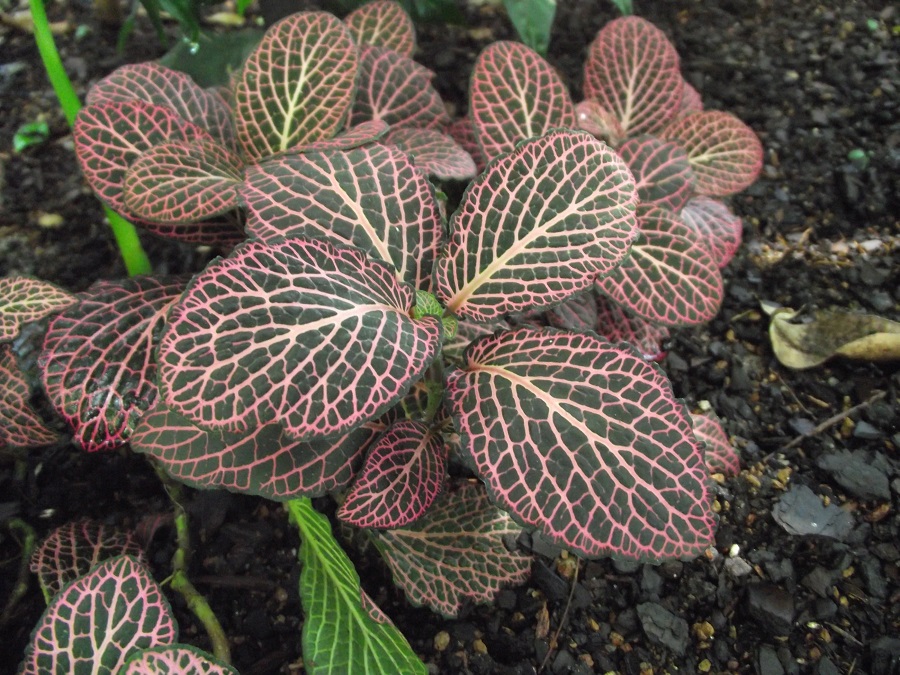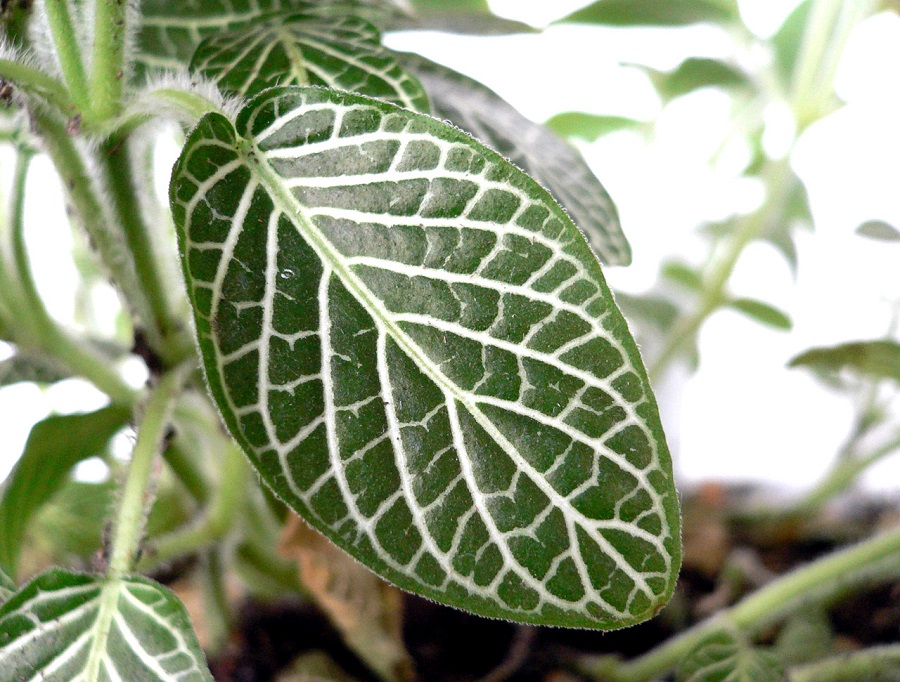Pianta di Fittonia - Cura, Propagazione e Tipi di Pianta Mosaica
La Fittonia è una pianta che molti associano ad esemplari esotici. La pianta è abbastanza delicata e richiede un trattamento speciale - soprattutto, annaffiature regolari. Vi state chiedendo come rendere la pianta nervosa bella a lungo? Impara i consigli e i trucchi condivisi dagli esperti e prenditi cura della tua fittonia.

Fittonia - che tipo di pianta è?
La Fittonia è una perenne originaria del Sud America, dove cresce in condizioni naturali. Non è una pianta alta. Di solito, non raggiunge più di 20-30 centimetri. Anche se le foglie dall’aspetto esotico di una pianta nervosa sono la sua decorazione più distinta, la pianta fiorisce anche. È interessante notare che i fiori appaiono tipicamente tra dicembre e febbraio. Grazie a una buona cura, la fioritura potrebbe ripresentarsi anche in estate. Non è una regola, però.

Fittonia - varietà
Fittonia, o pianta a mosaico ha diverse varietà conosciute. Quella con i nervi bianchi, Fittonia albivenis è il tipo più popolare. Oltre a questa, ci sono altri tipi di fittonia. Hanno foglie di colore diverso, come ad esempio:
- rosso,
- rosa,
- giallo-verde.
Ciascuna delle varietà di piante a mosaico menzionate ha un aspetto piuttosto interessante, in quanto mostra nervi bianchi chiaramente visibili (da qui il nome inglese “nerve plant”). I tipi più popolari includono:
- Angelo rosso Fitonia
- Fitonia Angelo di neve
- Fitonia Anne Bianco
- Fitonia Mosaico Diamante Rosa
- Scheletro Fitonia Mosaico
Ci sono anche due varianti completamente diverse. La prima si chiama Fitonia Juanita. La pianta ha foglie rosa e verdi con un sistema nervoso rosa crema. L’altro tipo, Argyroneura, ha foglie verdi e nervi bianchi, e sembra abbastanza affascinante.

Cura delle piante di Fittonia - dove posizionare una pianta nervosa?
La Fittonia è una delle piante che amano i luoghi in mezz’ombra o in molle ombreggiatura. Non può essere esposta alla luce diretta del sole. Inoltre, le piace il calore - quindi la temperatura ambiente che va dai 18-20°C (64.4-68°F) è ideale per lei.
Il miglior terreno per una fittonia
Il terreno migliore per una fittonia è fertile e permeabile. Anche il livello di pH è importante - dovrebbe essere acido tra 5,5 e 6,5. Fate attenzione anche al livello di umidità, livelli moderati sono ideali. La Fittonia non ama il terreno secco e reagisce rapidamente. Non può nemmeno essere innaffiata troppo. Innaffiate la vostra pianta di mosaico ogni 5-6 giorni e nebulizzate le foglie se necessario.
Non usare l’acqua del rubinetto per innaffiare le fittonie. L’acqua filtrata o distillata è un’idea migliore - si può comprare in qualsiasi supermercato.

Le fittonie sono piante resistenti?
Le fittonie sono piante piuttosto delicate. La loro reazione immediata alla mancanza d’acqua è la caduta - le foglie si seccano e cadono. Le piante fittoniane amano anche il calore. Ciò significa che richiedono temperature moderatamente alte per crescere. Anche la fittonia non è resistente al gelo.
È interessante notare che le fittonie sono abbastanza resistenti ai parassiti e alle malattie. Anche se ovviamente possono verificarsi, non c’è il rischio che la pianta si ammali gravemente e si secchi o appassisca.
Propagazione della fittonia - è difficile?
Propagare le fittonie è un compito estremamente facile e chiunque può farlo. Basta tagliare i germogli superiori - faranno delle piantine perfette. Immergerle in un prodotto speciale per la radicazione e poi metterle in un terreno misto a torba.
Le fittonie hanno bisogno di fertilizzante?
La fittonia è una pianta che richiede una concimazione regolare. I prodotti liquidi sono i migliori in questo caso. Possono essere utilizzati durante il periodo di vegetazione ogni 2 settimane, e una volta al mese durante il periodo di dormienza.
Le Fittonie traggono il massimo beneficio dai fertilizzanti progettati per le piante a foglia o ornamentali. Assicurati che il prodotto non contenga grandi dosi di azoto.

Come trapiantare una fittonia?
La fittonia cresce molto velocemente nelle sue fasi iniziali. Per questo motivo, potrebbe aver bisogno di essere rinvasata - a volte anche una volta all’anno. È importante, perché man mano che la pianta cresce, cresce anche il suo apparato radicale. La mancanza di spazio sufficiente per la crescita potrebbe ostacolare lo sviluppo della pianta.
I maggiori problemi delle fittonie
La fittonia è una pianta abbastanza esigente, quindi potreste incontrare alcuni problemi quando la coltivate. L’essiccazione delle foglie è il problema più comune. Vi state chiedendo perché può succedere? Ci sono alcune possibilità:
- troppa luce solare
- aria secca,
- non nebulizzare le foglie.
Potreste anche notare la caduta delle foglie di fittonia senza alcun segno di essiccazione. Cosa fare in questo caso? Il motivo più comune è la bassa temperatura dell’ambiente.
Quali sono i parassiti comuni che attaccano le fittonie?
Le fittonie sono tipicamente attaccate da afidi e acari. Potrebbero diffondersi su di loro da altre piante. Puoi prevenire questo usando spray naturali. Se gli insetti si sono già diffusi in gran numero, i prodotti chimici sono l’opzione migliore. Agiscono velocemente e in questo modo si previene il danno alla pianta.

📍 Come prendersi cura di una fittonia?
La Fittonia è una pianta delicata, e per questo ha bisogno di cure speciali. Assicurati che cresca nel posto giusto, ricordati di annaffiarla e piantala nel terreno giusto. Le Fittonie devono essere rinvasate ogni anno e concimate regolarmente con prodotti speciali.
📍 Propagazione di piante nervose - come fare?
Le Fittonie possono essere propagate usando i loro steli superiori. Tagliateli, immergeteli in un liquido speciale di radicazione e metteteli in un vaso pieno di sabbia e torba.
📍 Qual è il miglior terreno per le fittonie?
Le fittonie richiedono un terreno fertile e permeabile. La miscela deve anche essere umida. Anche il pH acido del terreno è un fattore importante.
📍 Come innaffiare una fittonia?
Le Fittonie richiedono annaffiature regolari. Oltre alla classica annaffiatura ogni 5-6 giorni, ricordatevi anche di nebulizzare le foglie.
Articoli in primo piano




